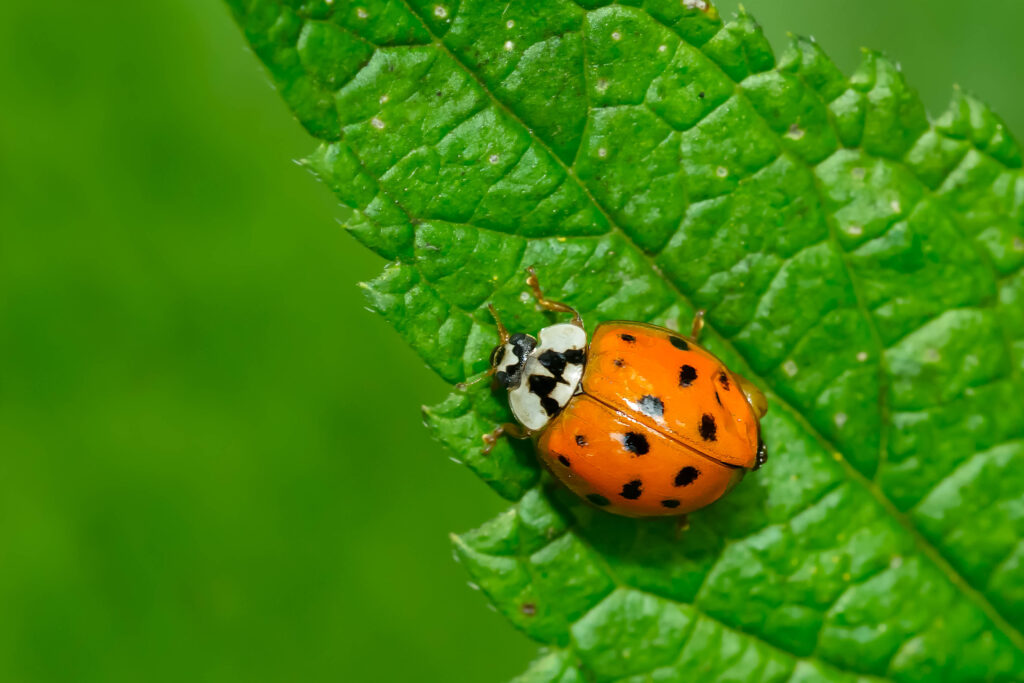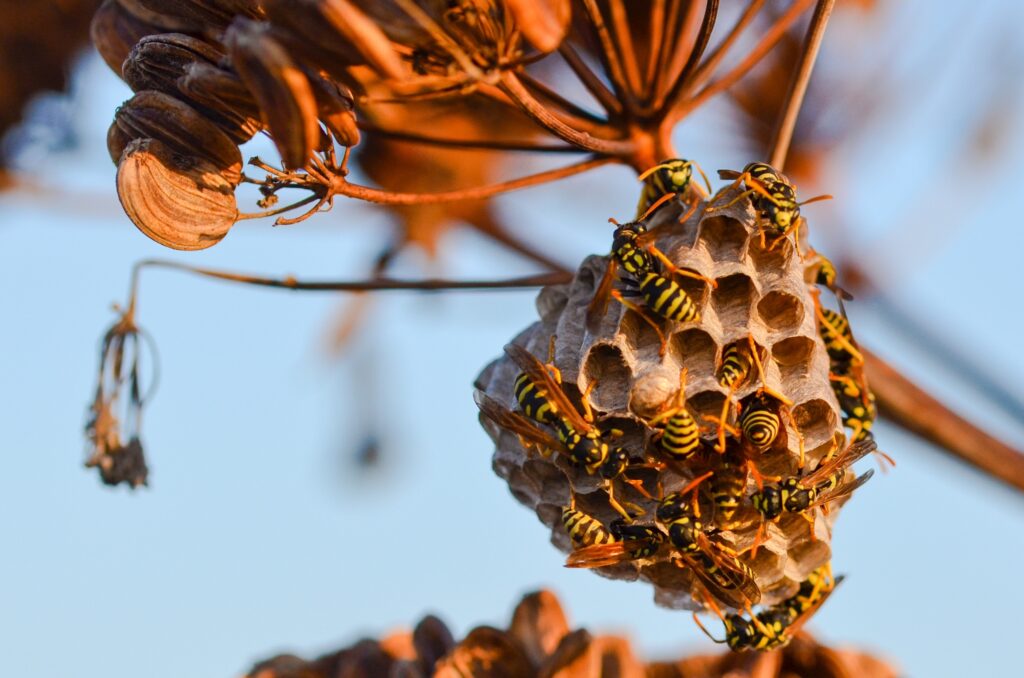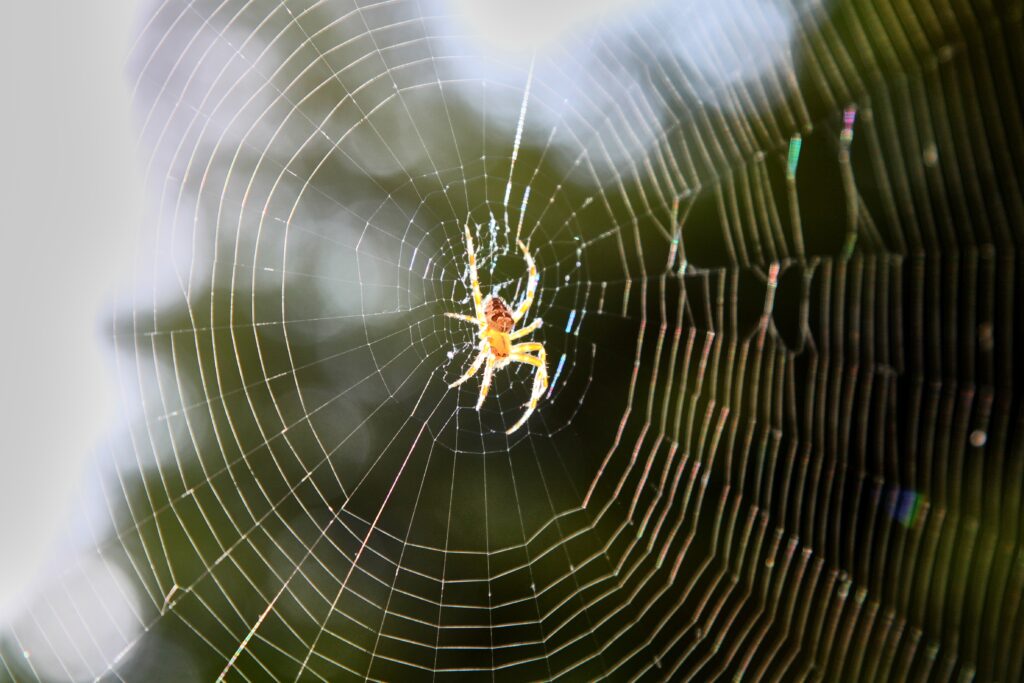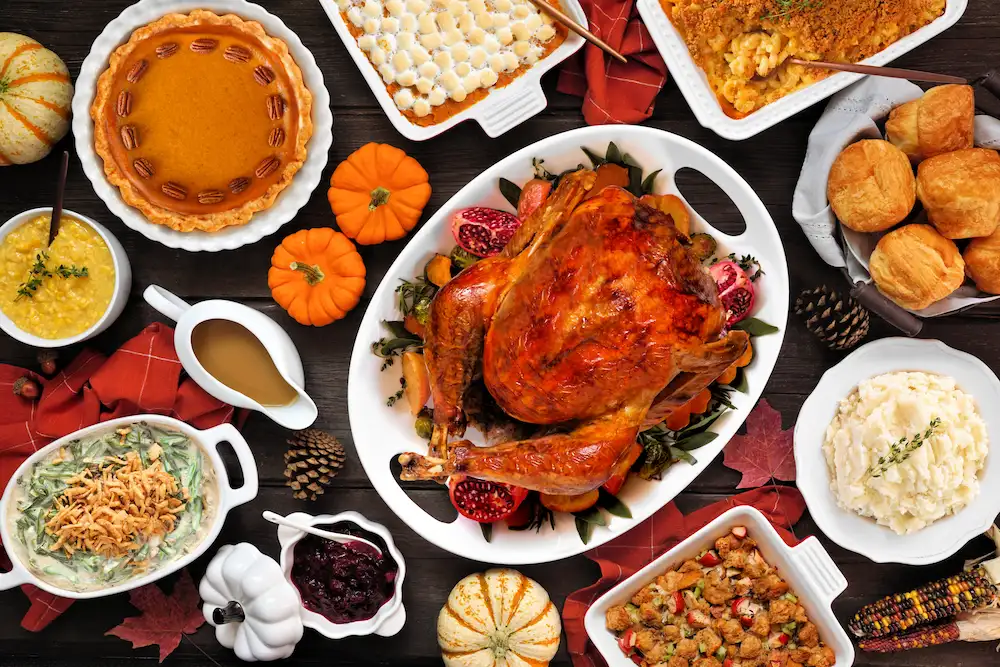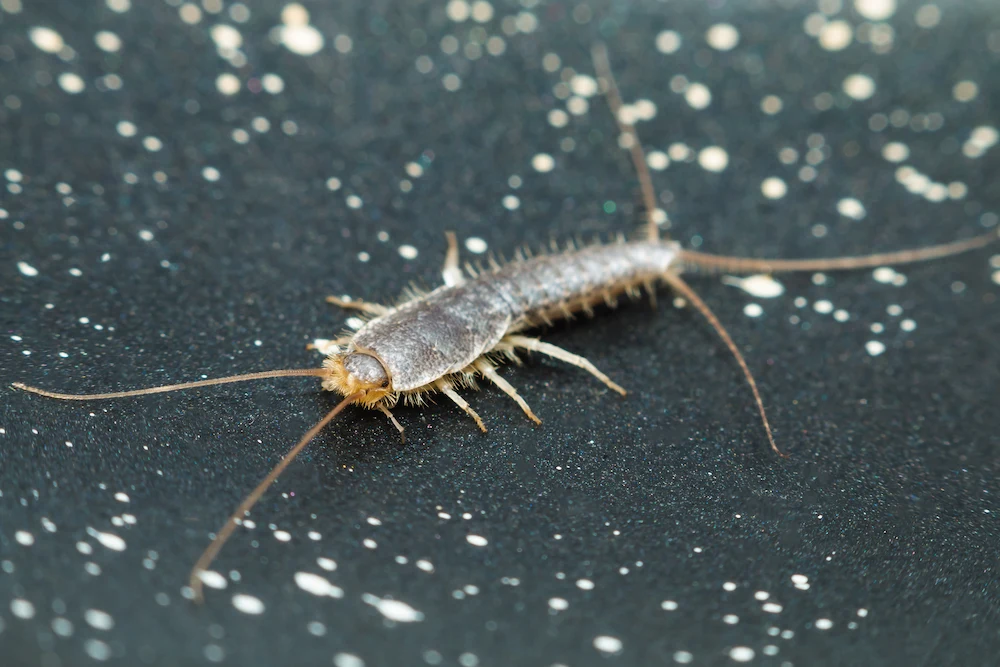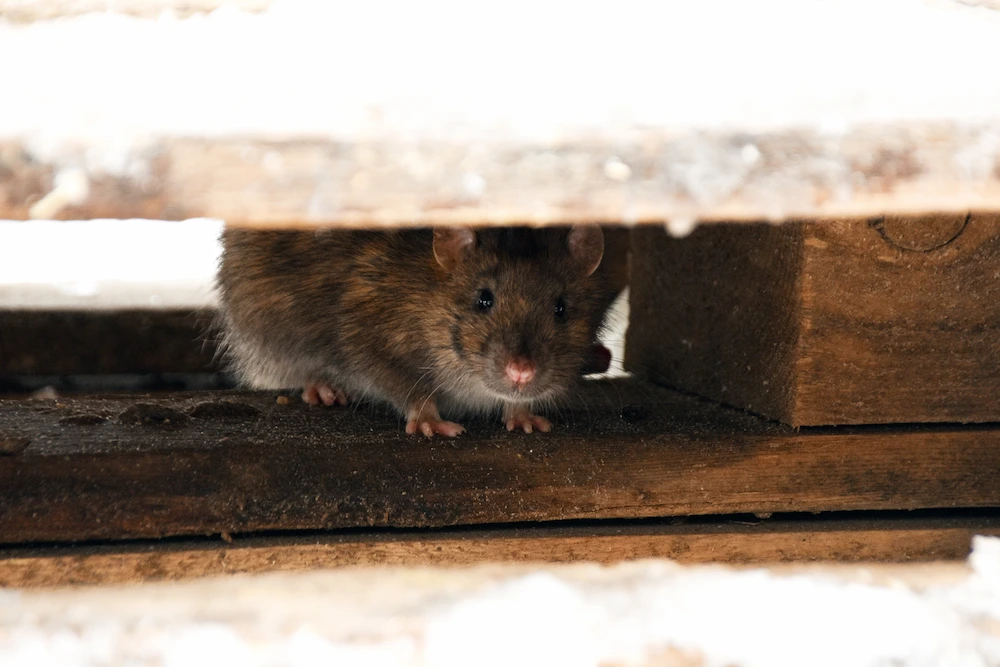In the heat of the summer, there’s nothing like escaping the routine of everyday life to spend a long weekend in nature. Some people prefer to “rough it” by camping in a tent or out under the stars, while others enjoy the luxuries of a nice cabin.
Cabins have a lot of fun features, but one area that can always be improved is pest prevention. The abundance of trees, greenery, and natural wood appeals to all kinds of critters that thrive in these areas. Let’s take a trip through each of the four seasons and their common cabin pests before we get into the best ways to prevent them from ruining your cabin adventures.
Spring
A spring day in the mountains is a refreshing experience, especially with all of the native flowers beginning to bloom. The main downside of spring is that insects and spiders are starting to hatch from their eggs because the temperatures are finally warm again. If you stay in a cabin during this time, keep an eye out for new critters emerging to enjoy the spring sunshine!
The most common cabin pests in the spring include:
- Ants: These insects thrive in warm weather, so they resume their normal activity in the spring. The queen constantly lays eggs once she has enough workers. The worker ants are responsible for gathering enough food to sustain their ever-growing colony.
- Spiders: When insects are active, so are spiders. Their eggs start hatching when the weather is warm, so you’ll see spiders come out of hiding at this time. The web-building types begin constructing their webs on plants and structures to act as traps for their prey.
- Asian Lady Beetles: The warmth brings these pests out of hiding, so you’ll often see them gathering in sunlit areas of the cabin. They typically gather on windows and walls that get direct sunlight. Asian lady beetles hide in tight spots, so they’re tough to eliminate before they emerge.
- Carpenter Bees: These unique bees start their activities in spring once everything is warm. They chew holes in natural wood for their eggs, then gather nectar and pollen for food. Carpenter bees aren’t eusocial (like honey bees), but they still cause wood damage with enough time.
- Ticks: Since they can’t fly, ticks hide in overgrown grass and plants until someone walks close enough for them to crawl onboard. If you go on hikes around the cabin, stay away from longer grass and keep an eye out for ticks. They spread diseases, like Lyme disease, through their bites.
Summer
If we had to guess the most popular season to stay in a cabin, it would be summer (or winter. We can’t decide). These months are the warmest of the year, which is why we see swarms of insects flying around this time of year. Insects are energized with the high temperatures, especially when they have the shade of a cabin to hide in when the sun is too much.
The most common cabin pests in the summer include:
- Spiders: Spiders have a never-ending buffet in front of them during the summer months. They continue eating bugs and laying eggs in shady areas protected from the heat. Brown recluses and black widows have venomous bites, so use caution around any spider you find.
- Flies: These pests are more active in high temperatures, which is why they’re always bothering us at our summer barbecues. Flies contaminate everything they touch because they feed on decomposing organic matter. They also lay up to 150 eggs in a food source, so you don’t want flies anywhere near your food.
- Rodents: Although they’re active year-round, rats and mice are often seen in summer. They build their nests in hidden spaces, then forage for food all around their habitat. If you hear any scratching or squeaking sounds at night, it could be rodents hiding within the cabin.
- Stinging Insects: Unfortunately, these insects are even more aggressive when it’s hot outside. Many of them rely on flower pollen and nectar to feed their colonies, but yellow jackets also seek out protein and sugar-packed foods.
- Mosquitoes: Female mosquitoes just need a bit of water to lay their eggs in, and a summer rainstorm often results in a new generation of mosquitoes. They thrive in the heat and humidity, so female mosquitoes tend to bite us more often in summer.
Fall
The leaves change and the nights become cooler, but the pest problems stay the same…sort of. This is the time of year when critters start searching for a place to spend the winter. Whether they hibernate or stay active, pests need a cozy winter space that protects their numbers. A dry shelter from the rain and snow doesn’t hurt either!
The most common cabin pests in the fall include:
- Asian Lady Beetles: They emerge in spring, but Asian lady beetles become a problem in the fall. This is when they search for spaces to hibernate, which leads their huge groups to our warm cabins. They stain surfaces and bite when handled, so we suggest vacuuming them up as soon as you see them.
- Spiders: Are you seeing the pattern with spiders and cabins yet? They still have bugs to feed upon, but spiders are also starting to find their own overwintering shelters. Spiders usually stay in dark and dry areas with access to moisture, like the bathroom or garage.
- Cluster Flies: These flies start to go dormant for the winter, but they can still be active on the warmer days. Cluster flies are larger than house flies and are gray-colored. They’re usually found on warm window screens or sunny sides of the cabin.
- Roaches: As long as roaches have a shelter that’s dark, warm, and moist, they are happy to build their lives there. They feed on just about everything in sight, especially decomposing organic matter. DIY “solutions” can push them further into hiding, so pest control is essential.
Winter
If pests don’t find a safe shelter to survive the winter, they won’t make it to spring, plain and simple. The freezing temperatures, snow, ice, and rain are all dangerous to many critters when they aren’t prepared. That’s why a warm cabin filled with food and water sources is a pest’s paradise in the winter. Trust us: you don’t want to cozy up to the fireplace with a horde of pests!
The most common cabin pests in the winter include:
- Rodents: Rats and mice are often active in the winter because they have the warmth and safety of their hiding spots. These foragers still have plenty of food sources when it’s snowy outside, from a full trash can to leftover pet food.
- Carpenter Ants: These ants are even less desirable than normal ants, especially in a log cabin. Their strong mandibles (mouth parts) steadily chew through firewood and natural wood as they create intricate tunnels for their colony.
- Spiders: Yes, spiders are a common cabin pest all year long. Even when they’re hiding from the winter weather, spiders still have food sources with the bugs hiding in the same spots. Their eggs overwinter and adult spiders don’t need to eat every day, so they easily survive the winter indoors.
- Termites: Termites are tied with carpenter ants for being the worst pests to have in a cabin. The difference is that termites actually eat the wood they gnaw through. They’re mostly active in summer, but subterranean termites and termites that found their way inside can keep working throughout the winter.
How To Have a Pest-Free Cabin
Since cabins are usually surrounded by trees and wooded areas, it’s only natural to see some creepy-crawlies around the property. But there are different tasks you can do to cut down on the number of pests that invade your cabin. It’s all about eliminating opportunities for pests. The less food sources and entry points they have, the less likely they are to invade.
The most efficient ways to prevent pests from invading your cabin are:
- Keep the garbage contained. Make sure all trash makes it into the indoor garbage cans, and take the bags out when full. All outdoor trash receptacles should have strong lids and be completely sealed when not in use.
- Seal all possible entry points. Insects and spiders are small enough to fit through any tiny holes, but did you know that mice fit through spaces the width of a dime? Check the walls and doorways for potential entry points, and seal any that you find with waterproof caulk.
- Store firewood away from the cabin. If you keep firewood in stock, store it away from the cabin by at least 5 feet. Any wood-boring pests hidden within the wood can easily invade the cabin if the firewood is stored right against it.
- Trim back all vegetation. If you’re in charge of the yard work for your cabin, make sure all of the greenery is trimmed back from the cabin. Tree branches, bushes, and plants should all be cut back at least a foot from the cabin.
- Check all the screens. There’s nothing like getting that fresh mountain air in through the windows, but make sure the screens are in good shape before you open the cabin up. Small holes can be patched with extra material, and a screen with a lot of gaps should be replaced.
- Store all food properly. This is essential in keeping a pest-free cabin (or house). Store all opened food in airtight containers with good lids. If you have any furry friends with you, keep the dry dog or cat food sealed and away from any doors and windows.
- Inspect the cabin for wood issues. Since the cabin is mostly made of wood, it’s important to keep an eye out for any new developments in the health of the wood. Check the walls, ceilings, and doors for any damage, including wood rot and moisture damage.
- Remove all webs and nests. Humans aren’t the only ones who move into previously-owned homes. Spiders can use old webs, and certain stinging insects will use vacant nests of their own species. Remove all spider webs with a duster or broom, and contact a pest control professional to eliminate any stinging insect nests.
Don’t Let Pests Camp Out in Your Cabin!
It’s one thing to enjoy the nature that surrounds your beautiful cabin, but it’s another to see that nature be brought inside when pests decide to invade! At Pointe Pest Control, we are dedicated to keeping each of our clients safely pest-free throughout the year. We begin every service with a full property inspection to find all areas of pest activity. These findings help us create a treatment plan that’s completely customized to solve your pest issues. Your complete satisfaction with our services is our top priority. For a free quote on the most reliable services in the Pacific Northwest, contact us today!
Citations
Cluster flies & ladybugs. (n.d.). Schroeder Log Home Supply, Inc. Retrieved June 26, 2024, from https://www.loghelp.com/categories/cluster-flies-ladybugs.asp
Keeping critters out of your campsite or cabin. (n.d.). Havahart. Retrieved June 26, 2024, from https://www.havahart.com/articles/keeping-critters-out-of-your-campsite-or-cabin
Parsons, D. (2013, April 12). Spring cleaning your log cabin home. Appalachian Log Structures. Available at https://www.applog.com/blog/bid/95992/spring-cleaning-your-log-cabin-home (Accessed on June 26, 2024).
Snyder, T. (n.d.). A seasonal checklist for keeping pests out of the cabin. Cabin Life. Available at https://www.cabinlife.com/articles/evicting-insects-and-pests-from-the-cabin (Accessed on June 26, 2024).
Snyder, T. (n.d.). Cabin closing tips for critter control. Cabin Life. Available at https://www.cabinlife.com/articles/cabin-closing-tips-critter-control (Accessed on June 26, 2024).
Things you need to know before booking your cabin rental. (n.d.) Morning Breeze Cabin Rentals. Retrieved June 26, 2024, from https://www.morningbreezecabinrentals.com/cabin-advice/


